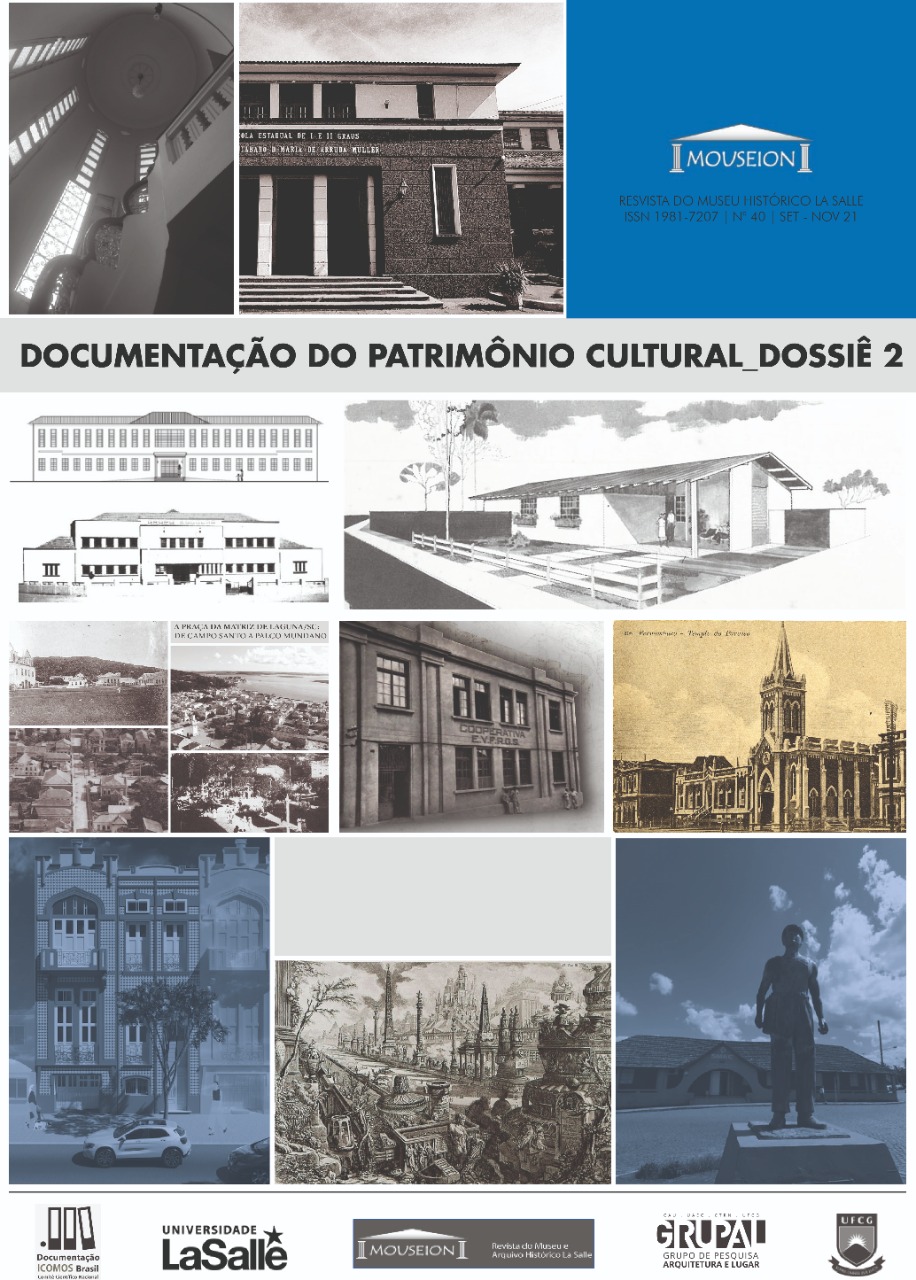The means used by municipalities in Rio Grande do Sul to document their built cultural heritage
DOI:
https://doi.org/10.18316/mouseion.v0i40.9318Keywords:
Cultural heritage, municipal cultural heritage, local heritage protectionAbstract
The purpose of this article is to present some of the instruments used by municipalities in the state of Rio Grande do Sul to document and protect cultural heritage, specifically built heritage. This was possible through the autonomy given by the Federal Constitution of 1988 for municipalities to complement laws and means of protecting their local heritage. Therefore, this research is theoretically based on existing legislation searched on the website www.leismunicipais.com.br, using the keywords “comprehensive plan”, “heritage site listing”, “inventory”, “historical heritage”, “cultural heritage”. Thus, official data were used to provide a quantitative basis for the means of protection, and then specific cases of some municipalities were analyzed. As a result from the 497 municipalities, 255 have a Comprehensive Plan, although only 109 have more than twenty thousand inhabitants and, therefore, are required by the city statute to have a Comprehensive Plan. There are 118 municipalities that have the Heritage Protection Law, and 46 have a Heritage Protection Council. Only 45 of the municipalities have properties listed at the municipal level, and few have properties inventoried by the municipality, use polygonal areas or special protection zones. It is necessary to encourage the registration and protection of assets through public policies.Downloads
Published
2021-12-22
Issue
Section
Dossiê
License
Authors must submit their manuscripts to be published in this journal agree with the following terms:
Authors maintain the copy rights and concede to the journal the right of first publication, with the paper simultaneously licensed under the License Creative Commons attribution that permits the sharing of the paper with recognition of authorship and initial publication in this journal.
Since the articles are presented in this journal of public access, they are of free use, with their own attributions for educational and non-commercial purposes.


